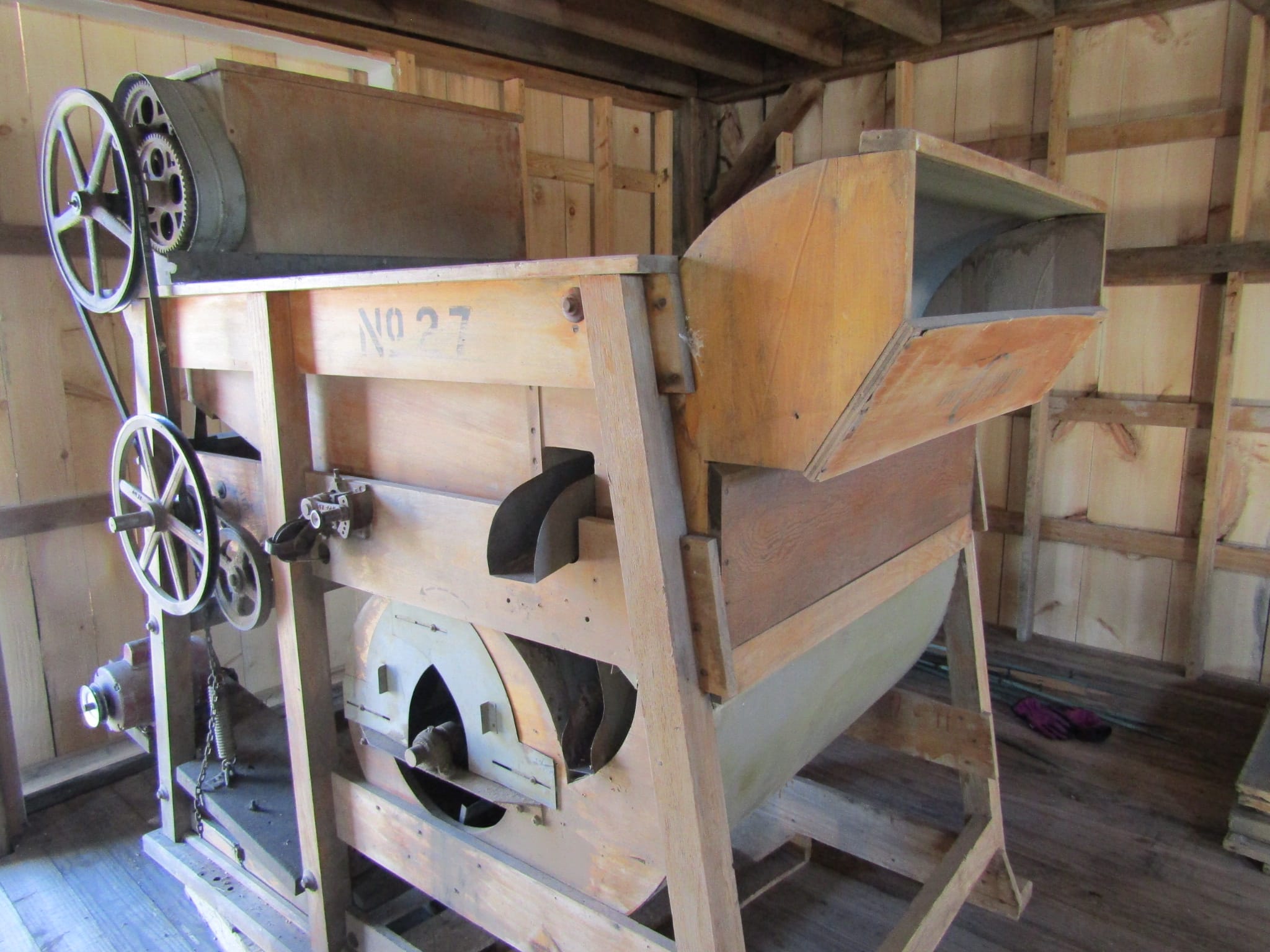
July 20, 2021
There was a time when wheat was “king” in Wisconsin, and our humble state produced more wheat than any other. A weekend road trip revealed that wheat is not just a minor crop here in the state, it is nearly nonexistent. But from 1840 – 1860 every farmer grew wheat. It was a low-cost, low-labor crop and there was a booming market to local mills and in mill cities like Milwaukee and Minneapolis.
Wheat Growing Moves West
However, heavy reliance on a single crop comes with a price. By 1860, continuously cropped wheat fields were routinely hit with disease and insects. Wheat farmers looked for a new source of income. Hay and corn were grown for the burgeoning dairy industry, while barley and hops took over for the brewing industry. Wheat growing moved west.
Plains states grew hard red winter wheat, inferior to Wisconsin’s soft red spring wheat, and soon became the darling of the newest invention in milling, the roller mill. The mills of Minneapolis, with their new technology, could turn western wheat into bright, white, uniform, and consistent flour. “Minneapolis” style flour soon became the industry standard. Although it was relatively flavorless, it was shelf-stable, not turning rancid even months after milling. Railroads could safely ship it nationwide. Small stone mills and small-scale wheat farmers began to disappear.
The Birth of Modern Flour
The consistency and storability of Minneapolis-style flour, Gold Medal and Pillsbury’s Best, came with a few trade-offs. The flour was tasteless and less nutritious, but nothing a few new recipes and additives couldn’t correct. Possibly the biggest “additive” was the shift away from homemade toward commercially made products, and Americans’ acceptance of sweeter, softer, less substantial bakery goods.
Milling inventions changed the products made from wheat and, eventually, agriculture changed the wheat itself. “Feeding the world” and Dr. Borlaug’s Green Revolution were motivators behind our modern day wheat with its stiff, short stems and its outsized endosperm (carbohydrate) in each kernel.
The Resurgence of Heritage Wheat
The farmers at Gwenyn Hill are not the first to question whether this modern wheat is the best for us. We have been following the heritage and ancient grain movement for a while. Pioneers around the nation are starting up small-scale grist mills and bringing back wheat breeding programs and heritage grain farming ventures. Articles like this one from Saveur inspired us to reintroduce heritage wheat into our crop rotation. In 2019, rather than grow high-yielding hybrid wheat we grew heritage Red Fife. Our Turkey Red Winter Wheat is ready to harvest this week.
To bring our wheat from field to table takes a bit of work. Once harvested, as shown in this video, and this one from the seat of the combine cab, the moisture must be reduced to no more than 13%. We use a portable grain dryer right in the field, or a vented-floor grain bin. Then the grain must be cleaned to remove weed seeds or other foreign matter. We have a wonderful old Clipper fanning mill just like my father used on our grain farm when I was growing up. Finally, before milling, the grain must be lab tested for quality and suitability for human consumption.

Once ready and approved for milling, it can be stone ground to various specifications. We do not have our own mill, so we are seeking custom milling at one of the very few midwestern mills that will mill our grain and return the flour to us, the grower. Perhaps Gwenyn Hill will, someday, have its own mill. Until then, we will be working to find a practical solution to bringing our heritage wheat from our fields to your table.
Linda Halley is the General Manager of Gwenyn Hill Farm.
